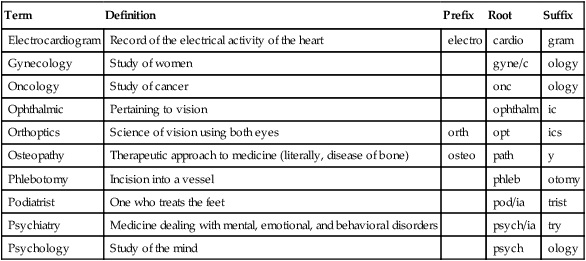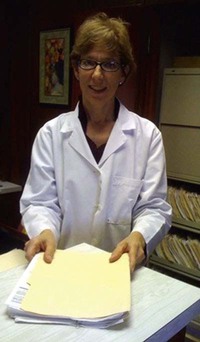Chapter 25 *A transition syllable or vowel may be added to or deleted from the word parts to make the combining form. Physicians and other medical care personnel work with their patients in a close or primary relationship (Box 25-1). The function of medical care providers is to promote optimal health and provide care during illness. Physicians must complete one of the most demanding educational programs of all health careers. Acceptance in these programs is determined by excelling academically, as well as participating in leadership and extracurricular activities. Individuals in medical care must be self-motivated and able to work long hours under pressure (Table 25-1). TABLE 25-1 Medical Career Educational Cost and Earnings *http://www.broward.edu/medicalassisting/MedicalAssisting/cost/page14834.html. MDs provide care through all phases of life. About one third of MDs and one half of DOs are primary care physicians. They are usually the first doctor to see the patient, and they see patients on a regular basis. Some of the many areas of specialization in medicine include anesthesiology, surgery, pediatrics, obstetrics, and urology. Information regarding the specialty of psychiatry is provided in Chapter 30. Information regarding careers in pathology is provided in Chapter 22. Most MDs work in private practice, although an increasing number work for health maintenance organizations or as hospital staff. MDs are licensed by the state after successful completion of medical school and passing a comprehensive board examination. The American Board of Medical Specialists certifies doctors in more than 145 specialties and subspecialties.
Medical Careers
 Define at least 10 terms relating to careers in medicine and related fields.
Define at least 10 terms relating to careers in medicine and related fields.
 Specify the role of selected medical care providers, including personal qualities, levels of education, and credentialing requirements.
Specify the role of selected medical care providers, including personal qualities, levels of education, and credentialing requirements.
 Define visual acuity, and describe at least two methods used to determine it.
Define visual acuity, and describe at least two methods used to determine it.
 Describe two types of electrocardiography used by medical personnel.
Describe two types of electrocardiography used by medical personnel.
Term
Definition
Prefix
Root
Suffix
Electrocardiogram
Record of the electrical activity of the heart
electro
cardio
gram
Gynecology
Study of women
gyne/c
ology
Oncology
Study of cancer
onc
ology
Ophthalmic
Pertaining to vision
ophthalm
ic
Orthoptics
Science of vision using both eyes
orth
opt
ics
Osteopathy
Therapeutic approach to medicine (literally, disease of bone)
osteo
path
y
Phlebotomy
Incision into a vessel
phleb
otomy
Podiatrist
One who treats the feet
pod/ia
trist
Psychiatry
Medicine dealing with mental, emotional, and behavioral disorders
psych/ia
try
Psychology
Study of the mind
psych
ology

Careers
Career
Educational Cost*
Earnings†
Medical assistant
Median annual salary: Fort Lauderdale, Fla.—$29,180

Physicians
Medical Careers






